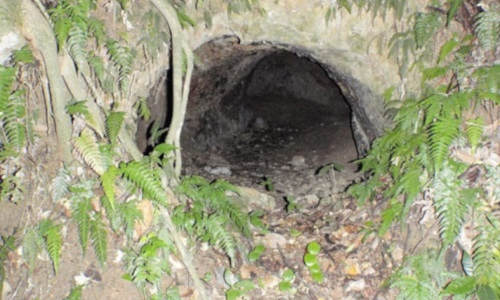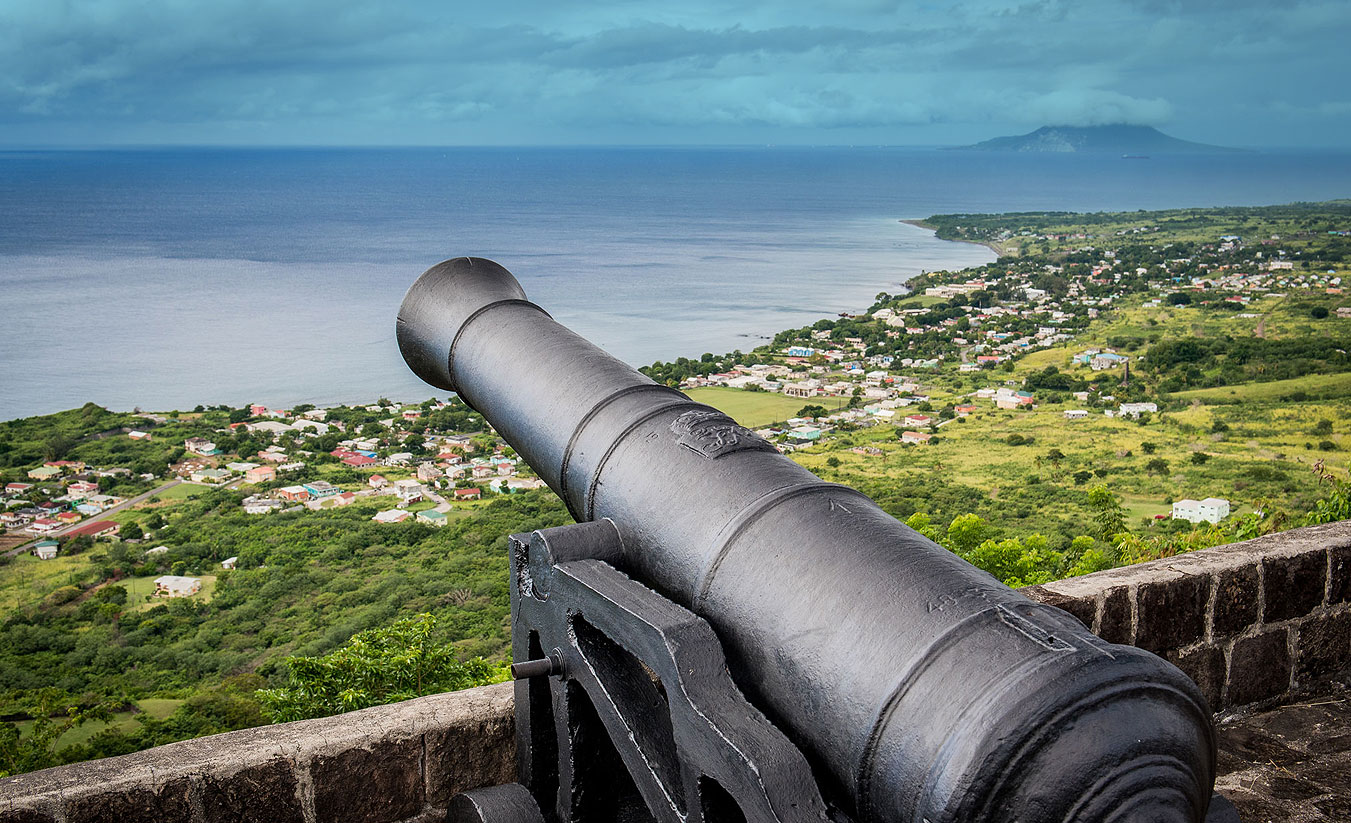
by Alex Robinson
According to the oral tradition the cave was first fashioned by maroons out of the side of Olivees Mountain in the 17th century. In a series of local history programmes a contemporary griot, Tamboura Kitwana, from St. Kitts Ministry of Culture, described the site:
“The cave is made of packed earth and rock, with a smoke hole and a door sized opening at the back, and is surrounded by gullies to the east, west and south. There is a path above the cave which leads straight up to the top of the ridge, over Olivees Mountain to Cayon.” Standing in the middle of the rain forest, about eighty feet below the cave, is a plunge bath made of dressed stone, reputed to have been built by Stephen.
James Stephen was a barrister in St Kitts 1783-1794; according to the oral tradition, he counselled enslaved Africans and free Blacks to pursue their rights. Following a series of prosecutions which aimed to curtail the rights of slaveholders’ use of brutal punishments, he alienated the white community to such a degree that he withdrew to the hills and took refuge in a cave. There, he continued to advise the enslaved workers and wrote reports on conditions, which he sent secretly to the Abolition Committee in London.
The oral tradition is supported by the evidence of these prosecutions , particularly the celebrated Herbert case: William Herbert, a local merchant, was accused of gross cruelty “upon one Billy, a Negro child of the age of Six Years, [...] that he did gag inhumanely and immoderately, wantonly and cruelly […] beat, wound, bruise and ill-treat the child so that of his life was greatly despaired.” The guilty verdict was without precedent in the English speaking Caribbean and caused bitter recrimination on the island.
Stephen’s visit to England and his meeting with Wilberforce on January 31, 1789 is also recorded: he met Wilberforce in Palace Yard and agreed to report to him.
Stephen returned to England in 1794, supporting the Haiti revolution and too radical for Wilberforce, but he learned to temper his radicalism. It was his strategy that led to the Orders in Council of 1806 which banned the slave trade to Britain’s enemies, making way for the Act abolishing the slave trade altogether in 1807, which he drafted. He spent the rest of his life campaigning for an end to slavery, as an MP from 1808 – 1815, as a founding member of the African Institution and author of a two volume, thousand page study, The Slavery of the British West Indian Colonies Delineated[…]. Stephen’s interpretation of plantation slavery is unique and prescient; he draws from close observation of the system and presents the horrors and excesses of that system, not as exceptions, but as commonplace, and perhaps most chilling, as sanctioned by law. Some of these observations were first reported in this cave, and the story preserved in the oral tradition affords agency to the island of St. Kitts in the achievement of Abolition.




